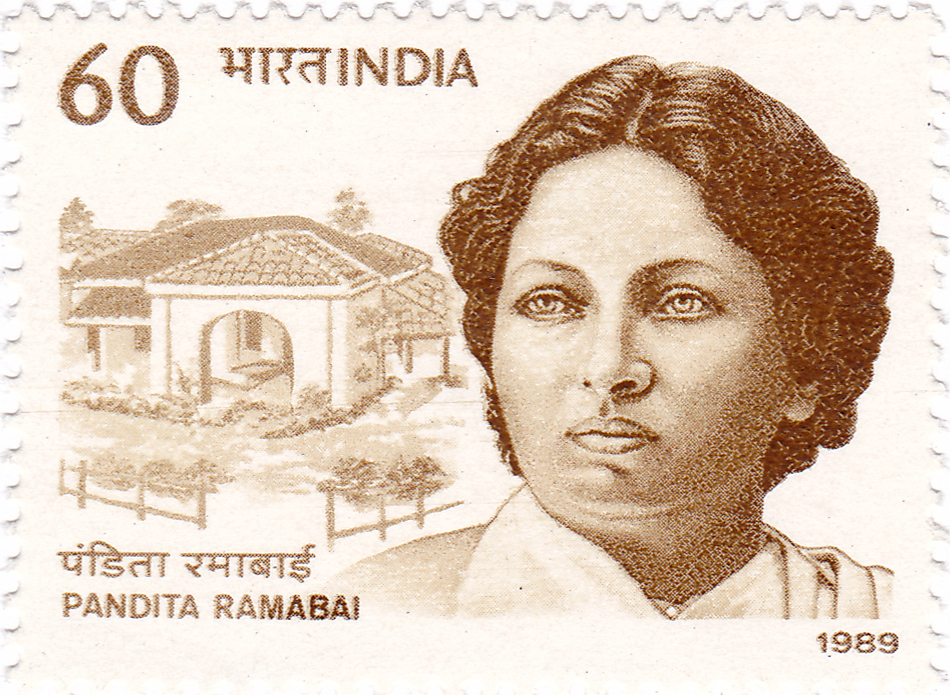Pandita Ramabai is undoubtedly one of the greatest feminist reformers in modern Indian discourse. With her exceptionally learned background, she became a pillar of women’s educational rights and social reform, not only in the Indian territory but worldwide. Breaking the glass ceiling in a male-dominated world, Ramabai contested patriarchy in her educational and missionary activities, thereby becoming a champion of the women’s cause in the 19th century.
As a controversial figure during the 19th century, owing to her upper-caste Hindu background, she was systematically erased from modern history for a long period. Ramabai’s life story is a glaring example of women’s liberation and emancipation. Her life story is one of defiance of the patriarchy and the orthodoxy of caste. April 23 marked the birth anniversary of Pandita Ramabai. A fierce champion of women’s rights, Ramabai is an inspiration for generations to come.
Early life
Born in a Chitpavan Marathi Brahmin family in Mangalore, Ramabai acquired learning in gruelling poverty. Her progressive parents went against the prevailing social norms of restricting a girl child from education and imparted within her vast knowledge of Sanskrit literature. Ramabai was also well acquainted with other Indian languages such as Bengali, Marathi and Kannada, which helped in her later years as a social reformer.
Ramabai’s father Anant Shastri Dongre was a renowned scholar, who believed in the necessity of educating women in order to attain development and progress. With the tragic demise of her parents in the famine of 1871 and 1878, Ramabai along with her brother travelled to the Himalayas and other parts of the country and finally settled in Calcutta. It was in Calcutta that her intricacies with Sanskrit grew stronger and was conferred upon her the title of ‘Pandita’ and ‘Saraswati’ by highly-qualified men of the city.
Ramabai defied the traditional patriarchal norms associated with caste and married Bipin Behari Medhavi of the Kayastha caste. However, after his death two years into their marriage, Pandita was once again left alone with only her child Manorama.
Rising from the ashes
With the responsibility of supporting herself and her child, Pandita moved from Bengal to Maharashtra. It was here that her reform career was launched with the Arya Mahila Samaj, which she established in 1882. The Arya Mahila Samaj worked for the promotion of education among women, the emancipation of women and delivering them from social evils such as child marriage.
With an ambition to study medicine in England, Ramabai decided to fund herself by publishing her first book Stree Dharma Neeti, the sale proceeds of which funded her travels to England. After spending three years in England, Ramabai left for America in 1886 wherein she participated in various public lectures on the prevailing conditions of women in India, particularly the high-caste Hindu widows and the need for reform.
Ramabai’s decision to come back to India for the cause of empowering oppressed women was met with hostility from the male-dominated sphere for many reasons. Firstly, she had converted to Christianity and her attempts at gender equality were seen as attempts to convert Hindu women to Christianity. Secondly, entry within the sphere of women’s empowerment was a radical step for a woman, since it was the exclusive domain of the male reformers. Despite these limitations, Ramabai continued to champion the women’s cause and emphasised her goal of uplifting women through education and self-reliance.
The emancipation of women
Pandita Ramabai was an exceptional scholar who understood and denounced the patriarchal outlook perpetuated by various Upanishads, Dharmashastras (ex: Manusmriti) and Vedas. In her revolutionary work titled, The High Caste Hindu Women, Ramabai focused on the plight of Hindu widows and called widowhood – “the worst and most-dreaded period of a high-caste woman’s life”.
In another of her revolutionary academic ventures, The Cry of Indian Women, Ramabai brought out the details of Indian women’s oppression through early marriage, marital harassment, desertion by the husband and widowhood.
In 1889, she established a widows’ home called Sharada Sadan which eventually blossomed into what is known as the Pandita Ramabai Mukti Mission. Here, she imparted emotional and physical support to marginalised women and also provided vocational training to teach them self-reliance. The Mukti Mission continues to date and is committed to providing housing, education, vocational training, and medical services amongst other things for many needy groups including widows, orphans, and the blind.
Ramabai was a staunch believer that imparting education to women was the best remedy for dismantling the patriarchal structure. She hoped that women’s education would lead to rejection of Brahminism and realisation of the fallacies within sacred literature.
The story of Pandita Ramabai is a source of inspiration to all feminists within India and abroad. Her work in the field of empowering women has revolutionised our understanding of feminist literature, emphasising the assertion of women’s equality, liberation and emancipation within the public and private spheres. Her firm defiance of patriarchy through marriage, religious conversion, rebellious academic literature and taking radical decisions are groundbreaking examples for generations of feminist movements and scholars to date. She continues to preside as one of the most prominent feminist social reformers in the Indian state.
Eesha Mani is a feminist writer pursuing Bachelors in Political Science from Jesus and Mary College, University of Delhi.
Featured Image: Wikimedia Commons

